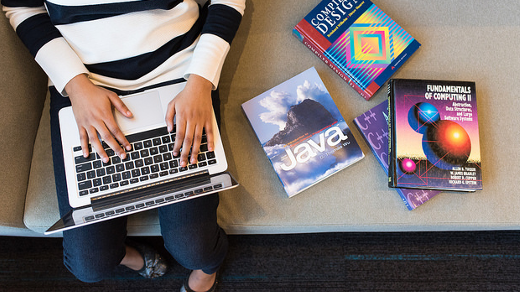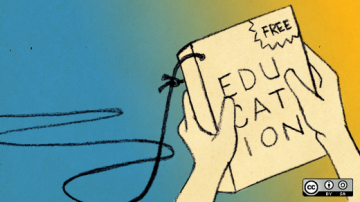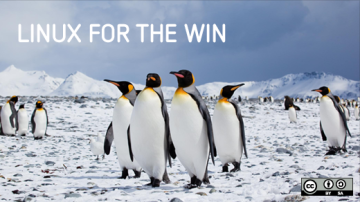Like many programmers, I got my start solving problems with code. When I was a young programmer, I was content to code anything I could imagine—mostly games—and do it all myself. I didn't need help; I just needed less sleep. It's a common pitfall, and one that I'm happy to have climbed out of with the help of two important realizations:
First, the software that impacts our daily lives the most isn't made by an amazingly talented solo developer. On a large scale, it's made by global teams of hundreds or thousands of developers. On smaller scales, it's still made by a team of dedicated professionals, often working remotely. Far beyond the value of churning out code is the value of communicating ideas, collaborating, sharing feedback, and making collective decisions.
Second, sustainable code isn't programmed in a vacuum. It's not just a matter of time or scale; it's a diversity of thinking. Designing software is about understanding an issue and the people it affects and setting out to find a solution. No one person can see an issue from every point of view. As a developer, learning to connect with other developers, empathize with users, and think of a project as a community rather than a codebase are invaluable.
Open source and education: natural partners
Education is not a zero-sum game. Worldwide, members of the education community work together to share ideas, build professional learning networks, and create new learning models.
This collaboration is where there's an amazing synergy between open source software and education. It's already evident in the many open source projects used in schools worldwide; in classrooms, running blogs, sharing resources, hosting servers, and empowering collaboration.
Working in a school has sparked my passion to advocate for open source in education. My position as web developer and digital media specialist at The International School of Macao has become what I call a developer-in-residence. Working alongside educators has given me the incredible opportunity to learn their needs and workflows, then go back and write code to help solve those problems. There's a lot of power in this model: not just programming for hypothetical "users" but getting to know the people who use a piece of software on a day-to-day basis, watching them use it, learning their pain points, and aiming to build something that meets their needs.
This is a model that I believe we can build on and share. Educators and developers working together have the ability to create the quality, open, affordable software they need, built on the values that matter most to them. These tools can be made available to those who cannot afford commercial systems but do want to educate the next generation.
Not every school may have the capacity to contribute code or hire developers, but with a larger community of people working together, extraordinary things are happening.
What schools need from software
There are a lot of amazing educators out there re-thinking the learning models used in schools. They're looking for ways to provide students with agency, spark their curiosity, connect their learning to the real world, and foster mindsets that will help them navigate our rapidly changing world.
The software used in schools needs to be able to adapt and change at the same pace. No one knows for certain what education will look like in the future, but there are some great ideas for what directions it's going in. To keep moving forward, educators need to be able to experiment at the same level that learning is happening; to try, to fail, and to iterate on different approaches right in their classrooms.
This is where I believe open source tools for learning can be quite powerful. There are a lot of challenging projects that can arise in a school. My position started as a web design job but soon grew into developing staff portals, digital signage, school blogs, and automated newsletters. For each new project, open source was a natural jumping-off point: it was affordable, got me up to speed faster, and I was able to adapt each system to my school's ever-evolving needs.
One such project was transitioning our school's student information system, along with 10 years of data, to an open source platform called Gibbon. The system did a lot of things that my school needed, which was awesome. Still, there were some things we needed to adapt and other things we needed to add, including tools to import large amounts of data. Since it's an open source school platform, I was able to dive in and make these changes, and then share them back with the community.
This is the point where open source started to change from something I used to something I contributed to. I've done a lot of solo development work in the past, so the opportunity to collaborate on new features and contribute bug fixes really hooked me.
As my work on Gibbon evolved from small fixes to whole features, I also started collaborating on ideas to refactor and modernize the codebase. This was an open source lightbulb for me, and over the past couple of years, I've become more and more involved in our growing community, recently stepping into the role of maintainer on the project.
Creating a new generation of developers
As a software developer, I'm entirely self-taught, and much of what I know wouldn't have been possible if these tools were locked down and inaccessible. Learning in the information age is about having access to the ideas that inspire and motivate us.
The ability to explore, break, fix and tinker with the source code I've used is largely the driving force of my motivation to learn. Like many coders, early on I'd peek into a codebase and change a few variables here and there to see what happened. Then I started stringing spaghetti code together to see what I could build with it. Bit by bit, I'd wonder "what is it doing?" and "why does this work, but that doesn't?" Eventually, my haphazard jungles of code became carefully architected codebases; all of this learned through playing with source code written by other developers and seeking to understand the bigger concepts of what the software was accomplishing.
Beyond the possibilities open source offers to schools as a whole, it also can also offer individual students a profound opportunity to explore the technology that's part of our everyday lives. Schools embracing an open source mindset would do so not just to cut costs or create new tools for learning, but also to give their students the same freedoms to be a part of this evolving landscape of education and technology.
With this level of access, open source in the hands of a student transforms from a piece of software to a source of potential learning experiences, and possibly even a launching point for students who wish to dive deeper into computer science concepts. This is a powerful way that students can discover their intrinsic motivation: when they can see their learning as a path to unravel and understand the complexities of the world around them.










1 Comment